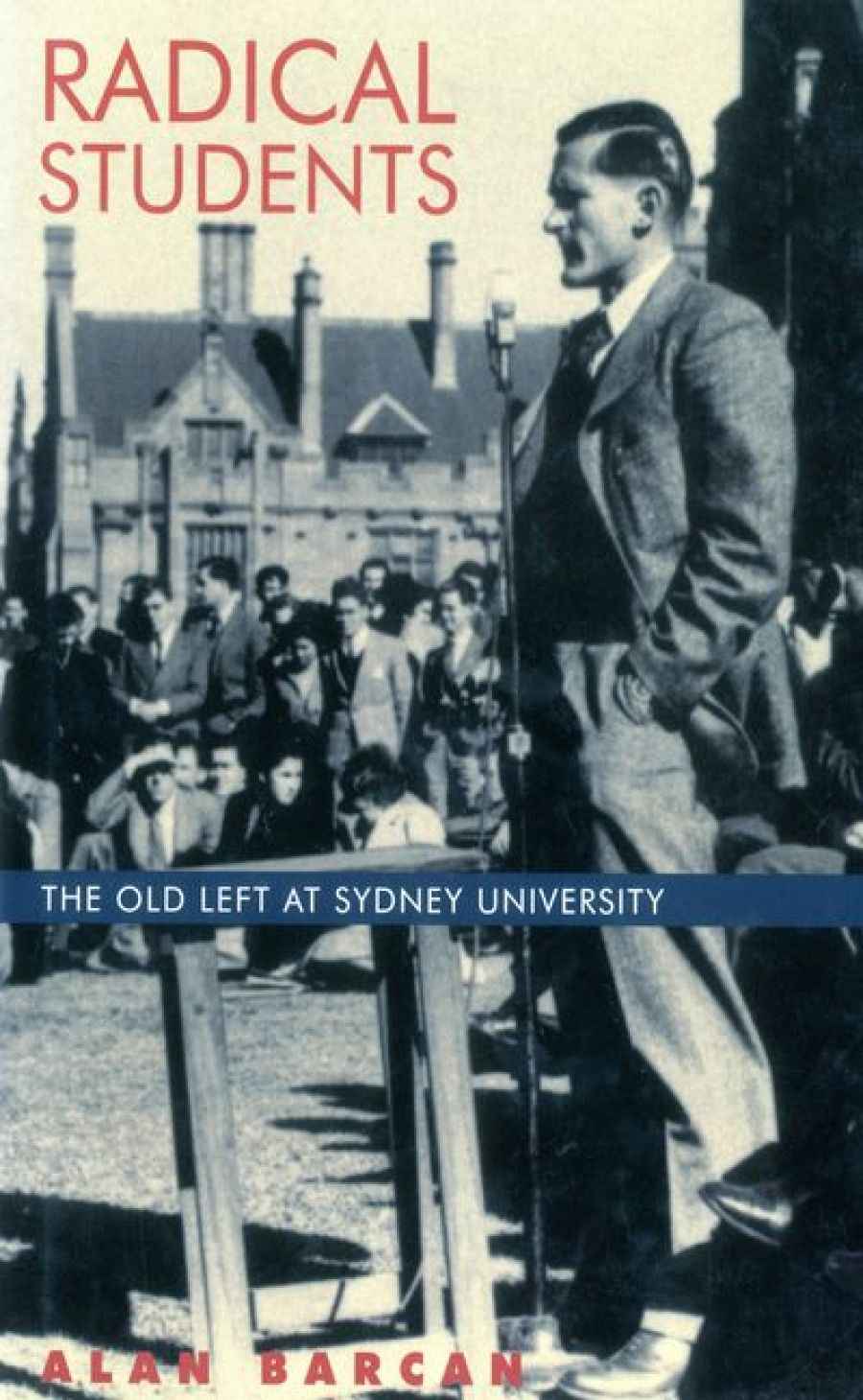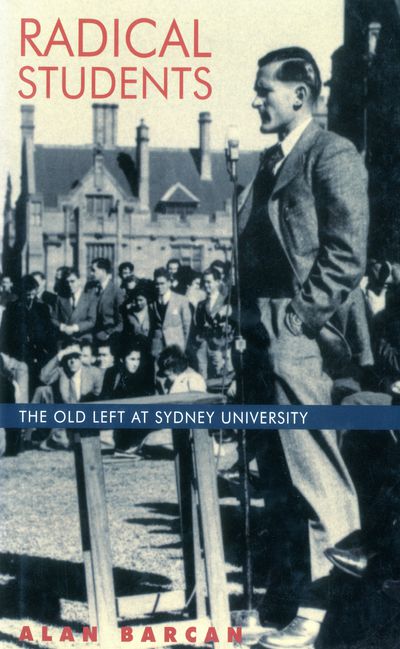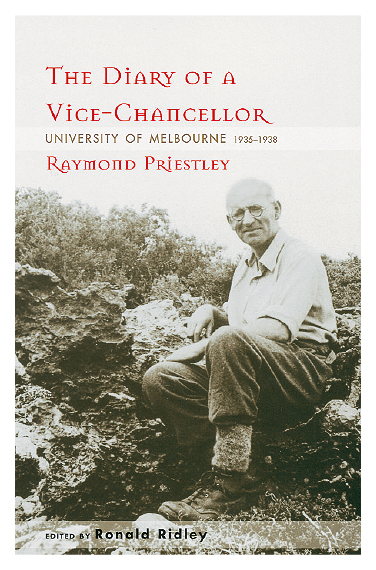
- Free Article: No
- Contents Category: History
- Review Article: Yes
- Article Title: Tertiary Foes
- Online Only: No
- Custom Highlight Text:
Many thousands of undergraduates have walked under the stilts of the Raymond Priestley Building, which forms part of Melbourne University’s great wind tunnel, with no thought of the person commemorated by its name. He was, in fact, a remarkable man. His four years as Vice-Chancellor (1935–38) emerge in extraordinary detail and intimacy, thanks to this edition of his journals.
- Book 1 Title: Radical Students
- Book 1 Subtitle: The old left at Sydney University
- Book 1 Biblio: Melbourne University Press, $49.95 hb, 392 pp
- Book 1 Cover Small (400 x 600):

- Book 2 Title: The Diary of a Vice-Chancellor
- Book 2 Subtitle: University of Melbourne
- Book 2 Biblio: Melbourne University Press, $59.99 hb, 555 pp
- Book 2 Cover Small (400 x 600):

The diaries give intimate glimpses of the Melbourne Establishment, in which Priestley, as an expatriate Englishman of impeccable credentials, found himself welcome, even as it struggled against him in University Council and the press, particularly the Argus. He seemed to know everyone: there is a photograph of him playing tennis with a (relatively) slim R.G. Menzies. He records conversations with Sir John Latham and Staniforth Ricketson, with whom he was on amiable terms, although Ricketson had criticised him in public over university issues. Some of the bright young people he recruited will be remembered as the names behind such institutions as the Jessie Webb Library, or by undergraduates of the 1960s as venerable academics at the end of their careers, such as Keith McCartney and Max Crawford.
Priestley records taking the train to Adelaide, partly to confer with Douglas Mawson on academic matters. He shared his compartment with a clergyman of interesting and distinct views, namely, Flynn (of the Inland). From his visit to Cambridge, there is a vignette of his conversations with Wittgenstein. There is a visit to a Test match in circumstances of extraordinary discomfort to watch Bradman. He observed that most of the crowd would be more comfortable (and better informed about the progress of the match) at home listening to the cricket on the wireless, if they had one, remarking that he himself did not. He lived rather austerely in South Yarra, and walked to university six days a week.
The struggles between Priestley and the old guard are alluded to with some passion in the diary, although it takes a degree of attention and interpolation to work out what really animated Lathan and the rest. In any event, by 1938, when Birmingham offered him the post of Vice-Chancellor, he had had enough and returned to England to begin a distinguished career in the development of that university. It is regrettable that he was not in Australia for the great expansions of the 1950s and later, although one suspects he had had quite enough of antipodean life on any terms.
If the Priestley diaries give the view of a university from the top, Alan Barcan’s study of the old left at Sydney University gives it from the bottom, or at least the middle. His study spans more than four decades, commencing in the 1920s and moving on to the new left period. His work is amiable, ironic and inclusive. He captures well the ghastliness of the small scale in which student politicians, particularly in periods of political apathy, struggle to maintain their anger: fierce diatribes delivered to an audience of seven in a cold lecture theatre. The photographs are eloquent and, with the text, provide us with many examples of pamphleteers and organisers later to become austere and remote judges, reactionary academics, conservative Catholic poets or journey-men teachers.
A thread ran through radical politics in Sydney that had no equivalent in Melbourne — the presence of John Anderson and his Andersonians. It is notoriously difficult to comprehend the charisma of those who have led or inspired students to become their followers, but Barcan gives a lively sense of both Anderson’s courage and idiosyncrasies.
Like Priestley, Barcan deals with the inclination of conservative rowdies to break up what they took, and what the organisers hoped, to be subversive rallies using physical force. In the days when professors exerted their influence more directly, even those eminent gentlemen (for such they were) took their part: ‘Eric Aarons recalls that, while he was distributing an anti-register leaflet at the main university gate, the irate professor of Latin, F.A. Todd, tried to wrest the bundle from him. He retained possession, employing the crushing argument: “You can’t have them; they’re private property.”’ Todd subsequently fined Aarons, but there can be no doubt as to who came off best.
Barcan essays some interesting distinctions between Melbourne and Sydney. In his view, in the 1920s and later, Melbourne was more radical than Sydney because there were several staff who supported left-wing activism amongst students. Eventually, the influence of Anderson had its inhibiting effect. Further, the large number of scholarship students at Sydney University depressed political activity because of their dependent position. The adventurous students willing or, more correctly, able to embrace unfashionable or even dangerous causes were to be found amongst the graduates, in particular lawyers, and it was they who, in Barcan’s words, ‘sustained the Labour Club’.
The latter point is well demonstrated by the names found in the Labour Club and later well-known in the law; Evatt, Sweeney and, amongst the Andersonians, Hutley. Barcan sees a shift from this source of radical students to the Faculty of Arts in the 1940s. He attributes this in part to shifting demographics in the university population and because the Law School was located downtown. Nonetheless, lawyers remain significant in radical politics. The new constitution of the Labour Club in 1939 was introduced by John Kerr (‘later to become Governor-General’, as Barcan economically notes).
When Barcan reaches the 1940s, he is dealing with more familiar paths about which many readers will know through memoirs such as those of Donald Horne and the careers of well-known literary figures of the 1950s and 1960s such as James McCauley. Barcan, who joined the Communist Party in 1940 and was editor of Honi Soit in 1946, brings to his account of this period both his personal recollections and an historian’s skill. There is a commendable absence of parti pris. Indeed, if one were to characterise the book’s tone at all, the word wry would be most apt.
His account of developments in the 1950s is of great interest in the way in which it shows the movement from, so to speak, ‘revolutionary’ youth, to a quite different maturity. This is reflected not only in terms of personalities but also organisations, whether they be clubs, magazines, religious bodies or political parties. Some of his nomenclature might raise an eyebrow: to use the words ‘new left’ of the prospect group in Melbourne is unusual, although Barcan explains what he means convincingly enough.
A constant theme of the book is the presence of John Anderson and the evolution of his relation to the left. Barcan offers a careful analysis of that ever-changing relationship, full of sharp vignettes of that rather vinegary figure. It is probably this aspect of the book that will create most debate. But, above all, a glance at the glittering cast of Barcan’s Index confirms the importance of his subject matter.


Comments powered by CComment